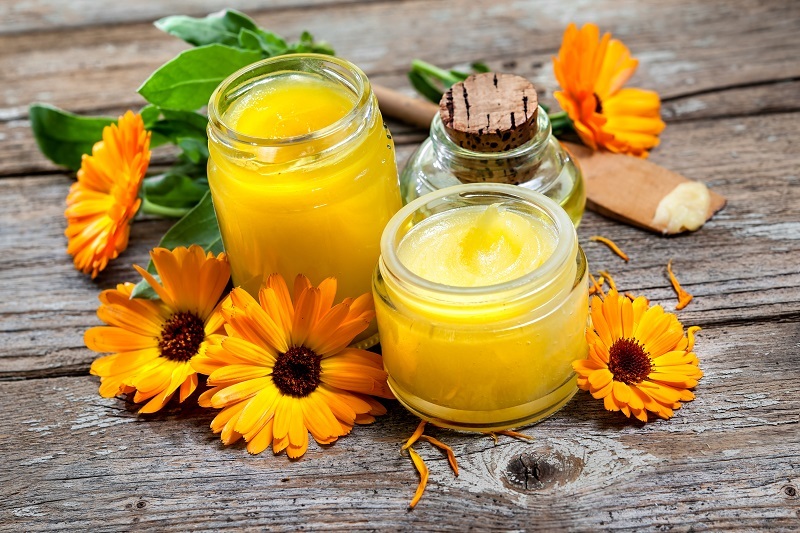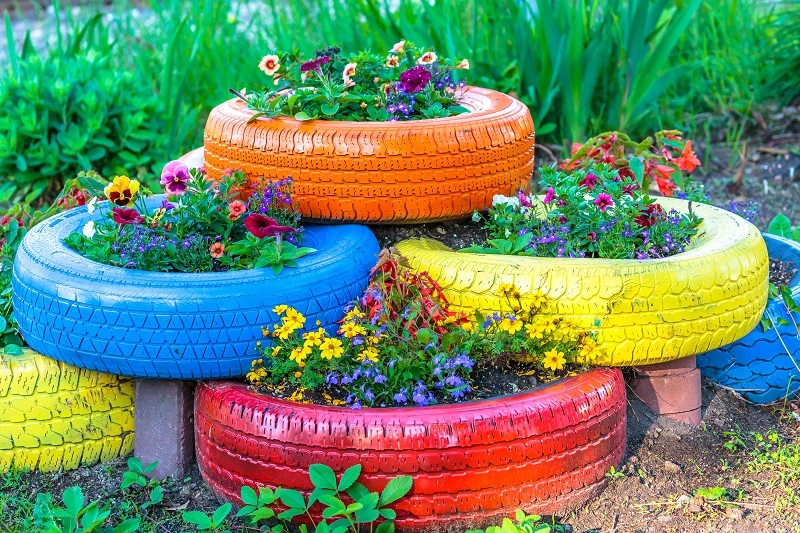Nurturing Beautiful Hydrangeas
Posted on 18/08/2025
Nurturing Beautiful Hydrangeas: The Ultimate Guide to Thriving Blooms
Hydrangeas are cherished worldwide for their spectacular clusters of colorful blossoms and stunning foliage. Nurturing beautiful hydrangeas requires more than just watering and sunshine--it's about understanding their needs, recognizing their unique varieties, and giving them optimal care throughout the seasons. In this comprehensive article, you'll discover everything you need to know about growing and maintaining gorgeous hydrangea plants in your garden!
Understanding Hydrangeas: Types and Unique Characteristics
Before diving into hydrangea care, it's essential to understand the most popular types of hydrangeas available to gardeners. Each variety has its own special requirements and visual appeal.
Popular Types of Hydrangeas
- Bigleaf Hydrangea (Hydrangea macrophylla): Famous for their large, mophead or lacecap flowers. These hydrangeas are often seen in shades of blue, pink, or purple, and their color can be influenced by soil pH.
- Panicled Hydrangea (Hydrangea paniculata): Noted for conical white flowers that often turn pink as they age. Very cold-hardy and easy to care for.
- Smooth Hydrangea (Hydrangea arborescens): Featuring beautiful spherical white blooms, this variety is native to North America and is extremely resilient.
- Oakleaf Hydrangea (Hydrangea quercifolia): Recognizable by their oak-like leaves and long, cone-shaped white flowers that age to rosy pink.
- Mountain Hydrangea (Hydrangea serrata): Similar to bigleaf hydrangea, but with smaller, more delicate blooms and leaves.
Why Grow Hydrangeas?
- Long Bloom Period: Enjoy vibrant flowers from late spring to autumn.
- Versatility: Perfect for borders, hedges, containers, and even indoor arrangements.
- Low Maintenance: Once established, they require minimal intervention.
- Wildlife Friendly: Attract bees, butterflies, and beneficial insects.

Best Locations and Conditions for Beautifying Your Hydrangeas
Selecting the right spot is crucial for successfully growing hydrangeas. Examine sunlight, soil, and shelter to ensure thriving plants.
Optimal Sunlight and Shade
- Most hydrangeas thrive in partial shade--preferably with morning sun and afternoon shade.
- Some, like panicle hydrangeas, tolerate more sun if well-watered.
- Too much shade decreases flowering; too much direct sun scorches the leaves.
Soil Requirements
- Rich, well-drained soils are preferred.
- Add organic matter, such as compost or leaf mold, for nutrients and good drainage.
- Hydrangeas need consistent moisture--drying out leads to wilted leaves and fewer blooms.
Shelter and Air Circulation
- Avoid exposed, windy positions.
- Good air circulation prevents fungal diseases, so allow adequate space between plants.
Planting Hydrangeas: Step-by-Step Guide
Proper planting is the key to nurturing healthy hydrangeas that will produce lush blooms year after year.
When and How to Plant
- Best Time: Early spring or autumn, when temperatures are mild.
- Dig a hole: Twice as wide as the root ball but not deeper than the pot it came in.
- Mix Compost: Blend compost with excavated soil to enrich the planting hole.
- Position Plant: Place the root ball in the hole, ensuring the top sits level with the ground.
- Backfill and Water: Fill in with soil and water deeply to settle roots.
- Mulch: Apply a layer of organic mulch to conserve moisture and suppress weeds.
Spacing and Companion Planting
- Allow 3-10 feet between hydrangeas, depending on mature size.
- Great companions include ferns, hostas, and shade-loving perennials.
- Avoid planting too close to trees with aggressive roots such as maples.
Watering Beautiful Hydrangeas
Consistent and correct watering is the most important step in nurturing beautiful hydrangeas.
- Water thoroughly: Hydrangeas need deep, soaking watering at least once a week, and more often during hot spells.
- Roots not leaves: Water at the base to keep leaves dry and prevent diseases.
- Mulch: Maintain a mulch layer to help soils retain moisture.
- Morning is best: Watering before noon reduces evaporation and fungal risks.
Signs your hydrangea needs water: Drooping leaves, wilting, or slow flower development.
Fertilizing for Abundant Blossoms
Feeding your hydrangeas is essential for vigorous foliage and prolific blooms. The right fertilizer transforms an average shrub into a breathtaking floral spectacle.
Best Fertilizer Choices
- Balanced Fertilizers (e.g., 10-10-10 or 12-4-8): Provides all-around nutrients.
- Slow-release Granules: Feed once in early spring, again in early summer if needed.
- Avoid Excess Nitrogen: Too much leads to lush leaves but fewer flowers.
- Organic Options: Well-rotted manure and compost are excellent choices.
Tip: Always follow the manufacturer's guidance for quantities. Overfertilizing can burn roots or push excessive leaf growth at the expense of blooms.
Pruning and Shaping Your Hydrangeas
Proper pruning promotes healthier plants and showier flowers. But the timing and method depend on the variety you're growing.
When to Prune Hydrangeas
- Bigleaf and Oakleaf Hydrangeas: Prune right after flowering in summer. These bloom on old wood formed the previous year.
- Panicled and Smooth Hydrangeas: Prune late winter or very early spring. These flower on new wood grown the same year.
How to Prune Effectively
- Remove dead or crossing branches, cleanly cutting at the base.
- Maintain desired shape and size, especially in smaller gardens.
- Cut away weak or spindly stems to encourage stronger growth.
- Always use clean, sharp shears for best results.
Changing Hydrangea Flower Colors
One of the most fascinating aspects of hydrangea nurturing is the ability to influence flower color--especially in Bigleaf (macrophylla) and Mountain varieties.
Soil pH and Flower Color
- Acidic Soil (pH below 6): Yields blue or lavender-blue flowers.
- Alkaline Soil (pH above 7): Creates pink or red blossoms.
- Neutral Soil: Results in mauve or a blend of pinkish-blue tones.
How to Adjust Flower Color
- For blue flowers: Apply aluminum sulfate or sulfur to acidify the soil.
- For pink flowers: Use agricultural lime to raise soil pH.
- Test your soil first--home soil testing kits are widely available and easy to use.
- Note: White-flowered hydrangeas do not change color based on soil chemistry.
Troubleshooting Common Hydrangea Problems
Even when you're nurturing your beautiful hydrangeas diligently, issues might arise. Here's how to identify and resolve the most common problems.
Hydrangea Diseases and Solutions
- Powdery Mildew: White, powdery film on leaves. Improve air circulation and avoid wetting foliage.
- Leaf Spot: Brown or purple spots. Remove affected leaves and avoid overhead watering.
- Root Rot: Yellowing, wilted leaves. Ensure proper drainage and avoid overwatering.
Pest Control
- Aphids: Small clusters of green insects. Rinse with water or use insecticidal soap.
- Spider Mites: Fine webbing and stippling on leaves. Treat with horticultural oil.
- Slugs: Chewed leaves. Use organic slug pellets or handpick at dusk.
Seasonal Care Tips for Gorgeous Hydrangeas
Hydrangea care routines change with the seasons. Here's how to keep your plants thriving all year:
Spring
- Mulch around the base after soil warms up.
- Apply slow-release fertilizer as new growth appears.
- Prune dead wood and tidy up winter damage.
Summer
- Water deeply during dry spells.
- Deadhead spent blooms to promote repeat flowering (some varieties only).
- Watch for pests and diseases.
Autumn
- Remove dead flower heads if desired, or leave for winter interest.
- Reduce watering as the season cools.
- Apply a fresh mulch layer before first frost.
Winter
- Protect roots with a blanket of mulch.
- Avoid pruning unless necessary--wait until spring.
- Shield sensitive varieties from harsh winds and heavy snow.
Hydrangea Propagation: Expand Your Collection
Once you master nurturing beautiful hydrangeas, you may want to multiply your favorite plants. Propagation is easy and rewarding.
Popular Methods
- Cuttings: Take 4-6 inch fresh stem cuttings in late spring/early summer, root in moist potting mix.
- Layering: Bend a low branch to ground level and cover with soil. Roots form after a few months.
- Division: Some older, clumping types (like smooth hydrangeas) can be divided in early spring or fall.
Designing Garden Spaces with Hydrangeas
Hydrangeas shine as centerpieces or companion plants. Here's how to landscape with hydrangeas for maximum visual impact:
- Mixed Borders: Combine with astilbes, hostas, and ferns for texture and foliage contrast.
- Foundation Plantings: Use larger varieties for stately structure near your house.
- Container Gardens: Dwarf cultivars add seasonal color to decks and patios.
- Cottage Gardens: Pair hydrangeas with classic roses, peonies, and delphiniums for an English garden vibe.

Frequently Asked Questions about Nurturing Beautiful Hydrangeas
How do I keep my hydrangeas blooming?
- Ensure they have the right balance of sun and shade.
- Feed in early spring and summer with a balanced fertilizer.
- Prune only at the correct time for your hydrangea type.
Why are my hydrangea leaves turning yellow?
- Check for overwatering or poor drainage.
- Lack of nutrients, especially iron or magnesium, can also cause yellowing.
- Pest or disease problems are another potential culprit.
Can I grow hydrangeas in pots?
- Yes, choose dwarf varieties or young plants.
- Use large, sturdy containers with drainage holes.
- Potting mix should be rich and moisture-retentive but well-draining.
Conclusion: Enjoy the Rewards of Nurturing Beautiful Hydrangeas
Growing hydrangeas is an exceptionally rewarding experience--combine patience, care, and the right gardening techniques and you'll soon be rewarded with lush, vibrant flower displays from early summer through fall. Keep this guide on nurturing beautiful hydrangeas handy as you plant, tend, and enjoy these enchanting shrubs in your home garden.
Ready to master the art of nurturing hydrangeas? Start planting today, and transform your landscape into a breathtaking floral paradise!
Latest Posts
Explore Valentine's Day's 5 Most Beloved Floral Gifts
Nurturing Beautiful Hydrangeas
Simple Tips to Maintain Your Flower's Beauty






